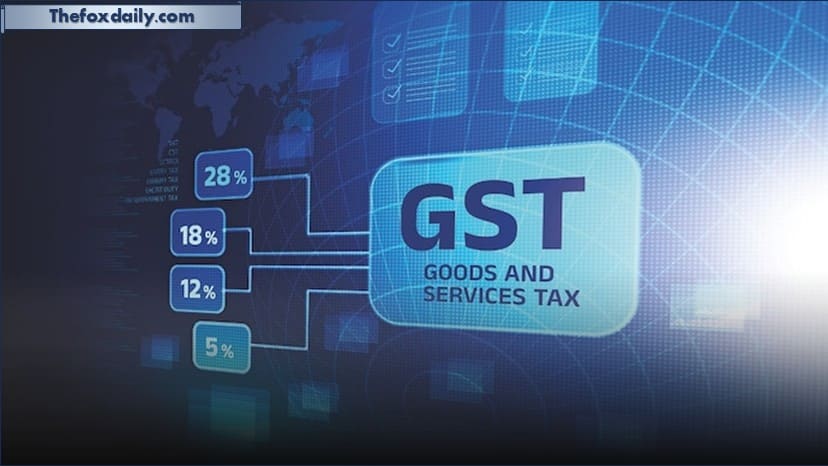
The most important proposed reform, which the central government recently announced would revamp the eight-year-old GST indirect tax regime, is to streamline the current four-tier structure of 5%, 12%, 18%, and 28% into a simpler two-tier system of 5% and 18%, with a special 40% rate for luxury and sin goods. This will likely lower compliance issues and greatly improve the ease of doing business for MSMEs. More tax slabs frequently result in more disagreements and, thus, more litigation.
According to Pramod Kumar Rai, chairperson of the Indirect Tax Committee at the trade group PHD Chamber of Commerce and Industry (PHDCCI), “fewer tax slabs are likely to reduce classification disputes.” According to Rai, if a garment has a selling price of Rs 1,000 but is given a 20% discount, the manufacturer may consider Rs 800 to be its MRP and place it in the 12% tier; but, the tax may consider Rs 1,000 to be the product price and place it in the 18% tier.
The government, moreover, has lowered the tax slab on several consumer goods, including white goods, cars and garments. According to Rai, “just 10% of the products from the 28% slab will go to the 40% tier, and 90% of the products from the 28% slab are likely to fall in the 18% category.” Additionally, only 1% of the products that are in the 12% GST bracket will be in the 18% GST slab; the remaining 99% will be in the 5% GST slab. This 7-10% reduction in taxes is significant for any industry.”
For example, consumer durables in the 28% slab will be moved to the 18% slab, resulting in a 10% price reduction for appliances such televisions, air conditioners, microwaves, ovens, and refrigerators. In a similar vein, entry-level cars, motorbikes, and scooters will drop from the 28% to the 18% rung under autos, increasing affordability and driving up demand.
Additionally, cement is anticipated to shift from the 28% slab to the 18% slab, which will significantly boost the real estate and construction industries, particularly in light of the growing expenses of construction. The 12% slab contained clothing and shoes. Products under Rs 1,000 will now be subject to 5% GST and the remaining 18% GST.
Rai claims that by cutting the tax rate, people will be able to purchase more goods, which will increase their expenditure. “MSMEs in these sectors will benefit from increased demand.”
A long-standing request of the industry, this action will help streamline the “inverted duty structure” that the present GST regime has generated for certain MSMEs. This occurs when the input (raw material) tax is greater than the output (final product) tax. A business’s working capital may be locked up as a result of an accumulation of Input Tax Credit (ITC) that cannot be used in its entirety. “The proposed rationalisation aims to correct these anomalies by moving more items into a single, cohesive rate, thus freeing up capital for MSMEs,” says Anil Bhardwaj, secretary general of the Federation of Indian Micro and Small & Medium Enterprises (FISME).
The suggested compliance reforms—streamlined registration, pre-filled returns, and speedier refunds—will lessen administrative load and free up MSMEs to concentrate on expanding their businesses, said Kulraj Ashpnani, partner at Dhruva Advisors. However, Bhardwaj points out that although the removal of GST slabs is a positive step, a number of fundamental issues with the GST system still need to be resolved if “GST 2.0” is to be a genuine “Diwali gift” for MSMEs.
Under the current GST framework, a business must have a separate GST registration in every state where it conducts business. This frequently calls for having a physical office or a specific location for business in every state. “This is a significant logistical and financial burden for MSMEs, which may operate with limited resources,” Bhardwaj explains. Moreover, each state has its own set of tax authorities, which can lead to multiple audits and investigations for the same business, causing harassment and increasing compliance costs, he adds.
The fact that each registered business in the GST system has three electronic ledgers—the Electronic Cash Ledger, the Electronic Credit Ledger, and the Electronic Liability Register—is another cause for concern. The Electronic Credit Ledger is where ITC is accumulated. The precise sequence in which this credit must be used presents a significant obstacle. For example, before using the Central GST (CGST) and State GST (SGST) credits, the Integrated GST (IGST) credit must be used up completely. Moreover, CGST credit cannot be used to offset SGST liability, and vice versa. “This can lead to a situation where a business has unutilised credit in one state’s ledger while having to pay tax in cash for another state, creating a blockage of working capital,” says Bhardwaj.
Currently in the proposal stage, the GST Council will discuss each of these reforms before they are put into effect. They will play a critical role at this juncture in giving an impetus to domestic consumption, especially in the era of Trump tariffs in which several export-oriented sectors may be impacted.
Get India Today Magazine by subscribing.
For breaking news and live news updates, like us on Facebook or follow us on Twitter and Instagram. Read more on Latest Business on thefoxdaily.com.






COMMENTS 0